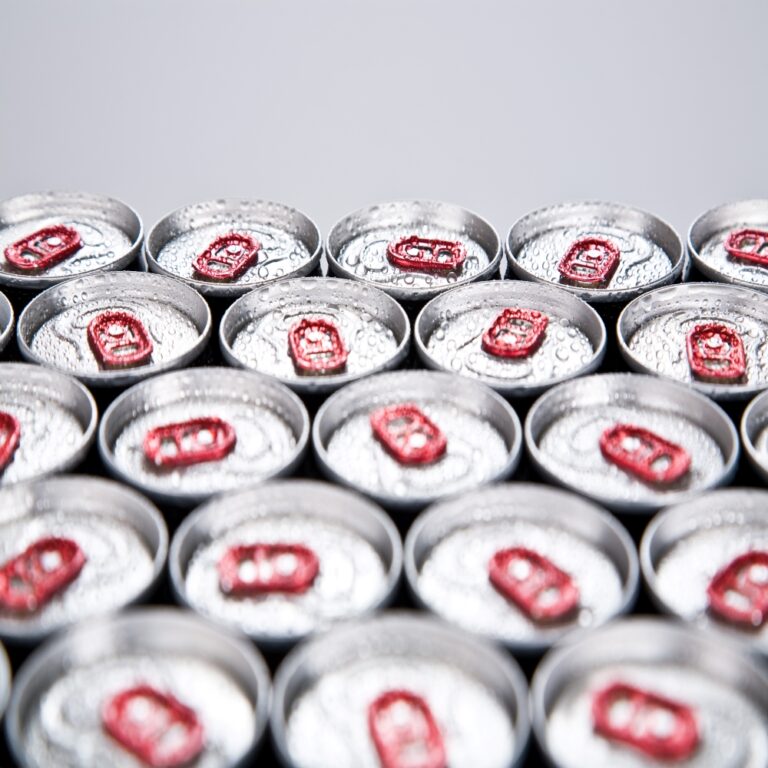01/05/2025
How are RTDs using innovation to drive category expansion?
RTDs have become a vital growth engine for beverage alcohol in recent years – but the ways in which brand owners are using innovation is evolving as the category matures
The pace of innovation in the expanding global RTD market is slowing as brand owners focus their efforts on growth areas including spirit-based products, premium-plus price tiers and higher-ABV variants.
In a persistently challenging trading environment for beverage alcohol, RTDs offer a much-needed bright spot, with overall category volumes rising by 2% during 2024, according to preliminary data from IWSR, the global leader in beverage alcohol data and insights. According to the IWSR Preliminary Read, RTD consumption grew in 16 out of the top 20 global markets last year.
As brewers increasingly look beyond beer to explore fresh avenues of growth, and wine and spirits players diversify into the category, RTDs are poised to make further gains in the years ahead.
The category has traditionally relied on a persistent churn of new products and flavours to retain consumer engagement and maintain sales momentum, but there are now clear signs that the pace of innovation has slowed since its peak in 2021.
In that year, more than 3,400 new RTD products were launched in the world’s top 10 markets for the category – but by 2024 that figure had dropped to just over 1,800, according to IWSR’s RTD Innovation Catalogue, part of IWSR’s annual RTD Strategic Study.
“Having reached a peak in 2021, new RTD product launches have been declining year on year, while volumes remain steadier,” says Susie Goldspink, Senior Insights Manager – RTDs and No/Low Alcohol. “The category is becoming less reliant on a never-ending stream of product launches, and RTD innovation is simply becoming more efficient.”
Hard seltzers continue to fade
In 2021, one in every three new RTD launches was a hard seltzer, but in 2024 that figure dropped to one in nine. The chief beneficiary has been the FAB segment (Flavoured Alcoholic Beverages), which accounted for 16% of launches in 2021, but 28% in 2024.
Meanwhile, the cocktail/long drinks segment has cemented its leadership position, expanding from 38% of new launches in 2021 to 42% last year. Also notable is the growth of no-alcohol RTDs, which accounted for 6% of launches in 2024, up from 3% in 2021. Wine spritzers/coolers also expanded their share, from 4% in 2021 to 7% in 2024.
“RTD innovations by category continue to fluctuate,” says Goldspink. “In terms of launch numbers, hard seltzers have fallen behind FABs since 2023, with cocktails/long drinks continuing to lead across the review period.”
Spirit-based RTDs drive innovation
The decline of malt-based hard seltzers has coincided with dynamic growth for spirit-based RTDs: in 2021, 34% of RTD launches in the top 10 global markets were malt-based, declining to 18% in 2024; over the same timescale, the share of spirit-based launches has risen from 55% to 67%.
This trend is also apparent if we narrow the focus to hard seltzers. In 2021, three out of every four new hard seltzer launches had a malt base, declining to 59% in 2024; meanwhile spirit-based hard seltzers’ share of innovations has lifted from 22% to 40%.
“Traditionally malt-based categories, such as hard seltzers and hard teas, are undergoing a switch to spirit-based products, premiumising the offering as consumers become more aware of base and the quality associated with spirits,” says Goldspink. “The establishment of an easy-to-drink, lower-ABV spirit-based category has now spawned another innovation race, although much smaller than that for malt-based hard seltzers.”
Premiumisation pauses after recent gains
Premium-and-above innovations in the RTD category peaked in 2023 amid signs that brand owners are reacting to more difficult market conditions and the pressure on disposable incomes by introducing lower-priced entries to the market.
In 2021, 58% of new RTD launches were premium or above, rising to 61% in 2023, before falling back to 53% last year. At the same time, the value price tier – which had dwindled to only 7% of launches in 2023 – regained some ground to hit a share figure of 15%.
“Despite this correction, the majority of RTD innovations continue to target the premium price band,” says Goldspink. “This is due in part to a shift in product mix away from more affordable hard seltzers in some markets, and from FABs in others.
“It is further driven by premiumisation within categories and the rise of spirit-based products within traditionally malt-based categories, as well as inflationary pressures.”
Some markets, such as Germany and the UK, skew strongly to higher-priced innovations. In 2024, 90% of new RTD launches in Germany was premium-plus, while in the UK the figure was 74%.
Higher ABV levels pique interest
Despite the widespread moderation trend, there are clear signs that some consumers are gravitating to higher-strength products, spawning a succession of new launches and line extensions of lower-ABV RTDs.
In 2021, 51% of new launches in the top 10 markets fell into the >3-5% ABV tier, but this share figure fell to 41% in 2024. Over the same timescale, the proportion of launches at >5-7% has risen from 18% to 22%, while the share for >7% has increased from 25% to 29%.
This shift has been particularly notable in the US and UK markets. In the US, the proportion of new launches above 5% ABV has risen from 48% to 55% between 2021 and 2024, while for the UK it has gone up from 53% to 72%.
“Although we live in an era of increasing moderation, higher-ABV offerings are providing more choice to RTD consumers,” explains Goldspink. “They may also help to retain people in the category, with popular brands increasingly offering a higher-ABV variant to their core expression.”
Fruit flavours rule, but with local variations
While the RTD category has historically been a hotbed of flavour innovation, the tried and tested continues to spearhead new product introductions around the world, with lemon – and, to a lesser extent, lime – to the fore.
Across the top 10 markets, lemon accounted for more than 8% of new RTD product launches in 2024, up slightly on 2021, with the relatively low percentage indicating the fragmented nature of the RTD flavours space. Lemon or lemonade flavour innovations were especially strong in China, Germany, Japan, Brazil, Canada and Australia during 2024.
But there are notable regional variations: passion fruit was the leading new product flavour in the UK last year, while coffee and mango tied for first place in Mexico.
Meanwhile, in the US, pineapple overtook lime as the most popular new product flavour in 2024, with 6% of launches. Pineapple’s popularity in South Africa – where it matched lemon’s 9% of new launches last year – also helped it to become the second most used new product flavour in the top 10 markets.
The above analysis reflects IWSR data from the 2025 data release. For more in-depth data and current analysis, please get in touch.
CATEGORY: RTDs | MARKET: All |
Interested?
If you’re interested in learning more about our products or solutions, feel free to contact us and a member of our team will get in touch with you.




